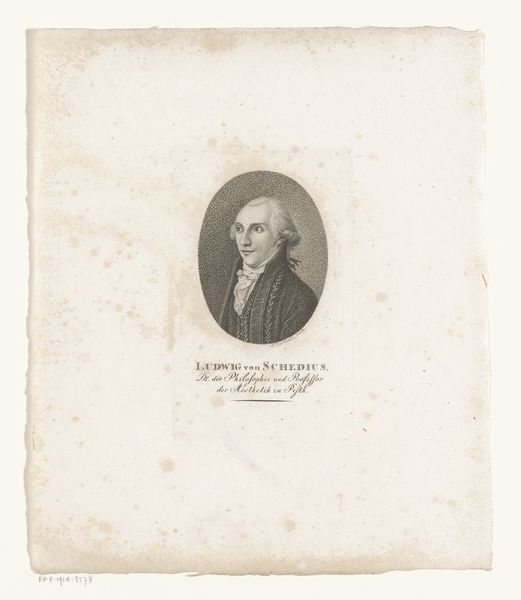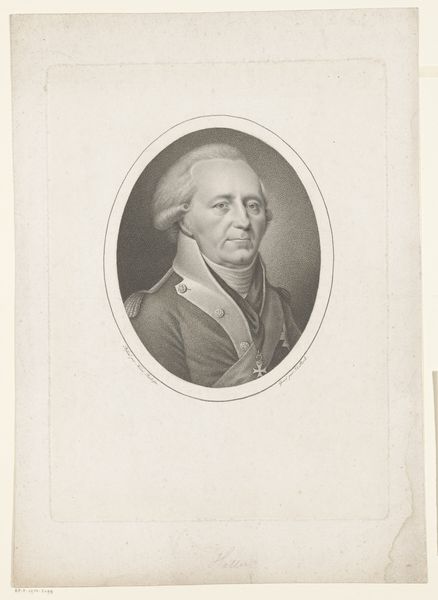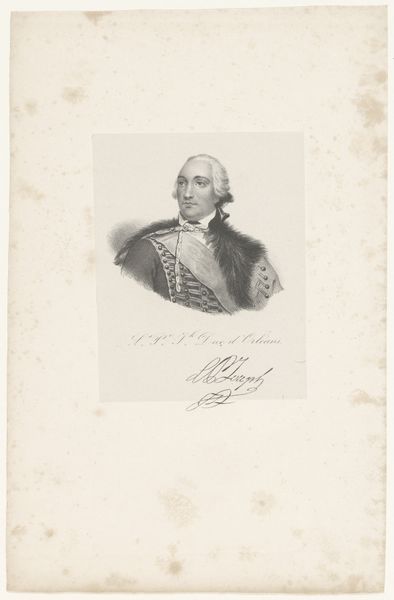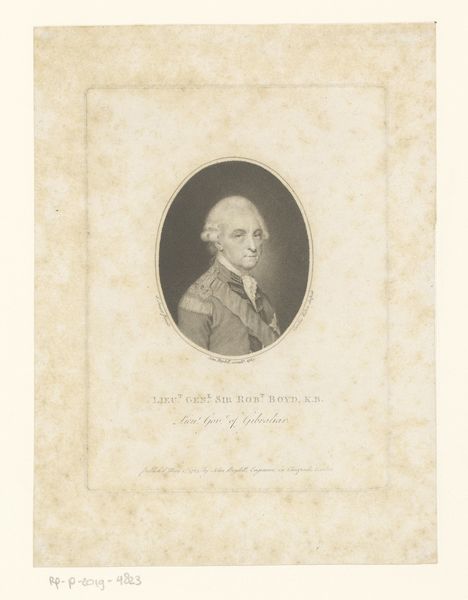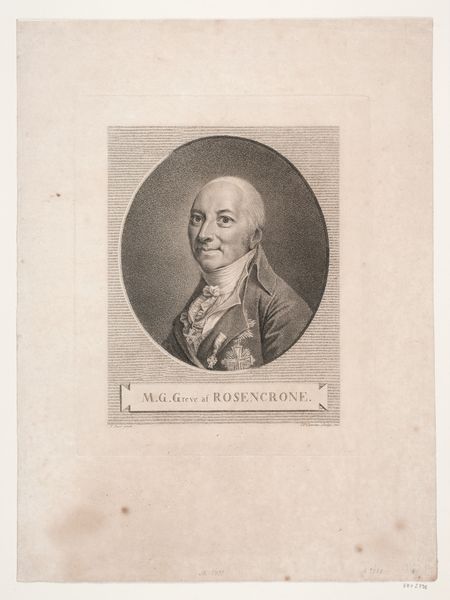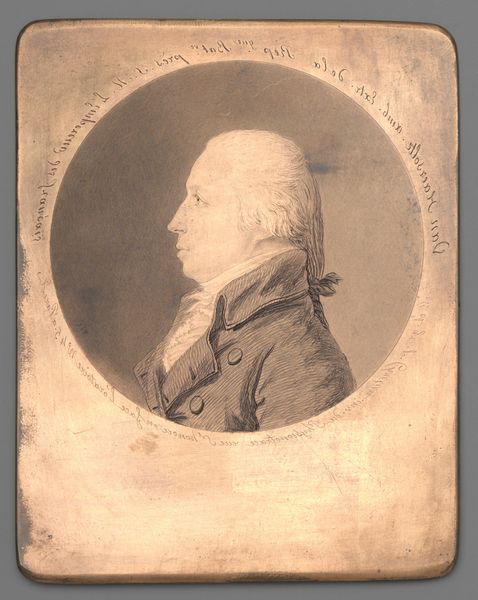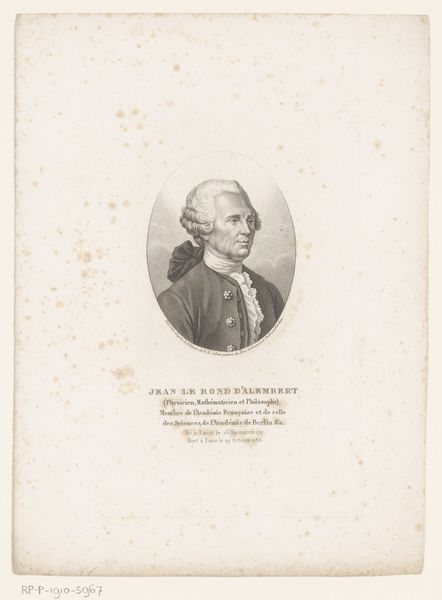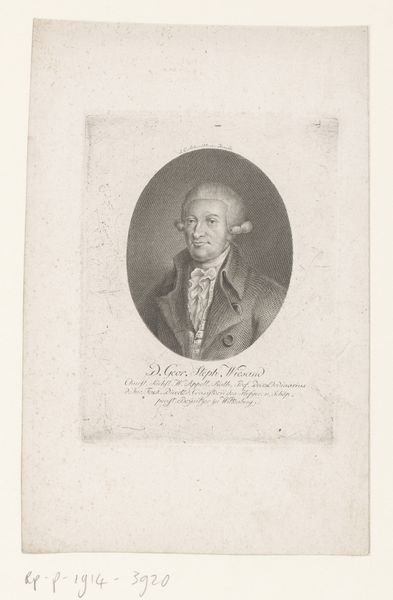
print, etching, engraving
#
portrait
# print
#
etching
#
old engraving style
#
history-painting
#
engraving
#
realism
Dimensions: height 210 mm, width 148 mm
Copyright: Rijks Museum: Open Domain
Johann Friedrich Bolt created this portrait of Johann Goercke in the late 18th or early 19th century, using engraving. This intaglio printmaking technique involves incising an image onto a metal plate, and then using the plate to transfer ink onto paper. The quality of the lines and the detail achieved speak to Bolt's skill as a craftsman. Look closely, and you can appreciate the many hours of focused labour required to produce this image, from the first cut to the final print. Engraving was a technology of reproduction, and examples like this demonstrate the hunger for images in an emerging consumer culture. It also speaks volumes about social status. Engravings like this one served to commemorate and circulate the likeness of individuals like Johann Goercke, and emphasized the sitter's position within a rigid social hierarchy. Considering the materials and processes involved in its production allows us to understand the work as both an aesthetic object and a cultural artifact, embedded in a specific time and place.
Comments
No comments
Be the first to comment and join the conversation on the ultimate creative platform.


